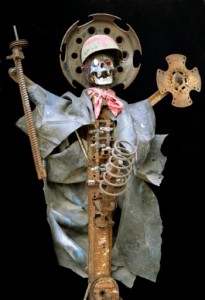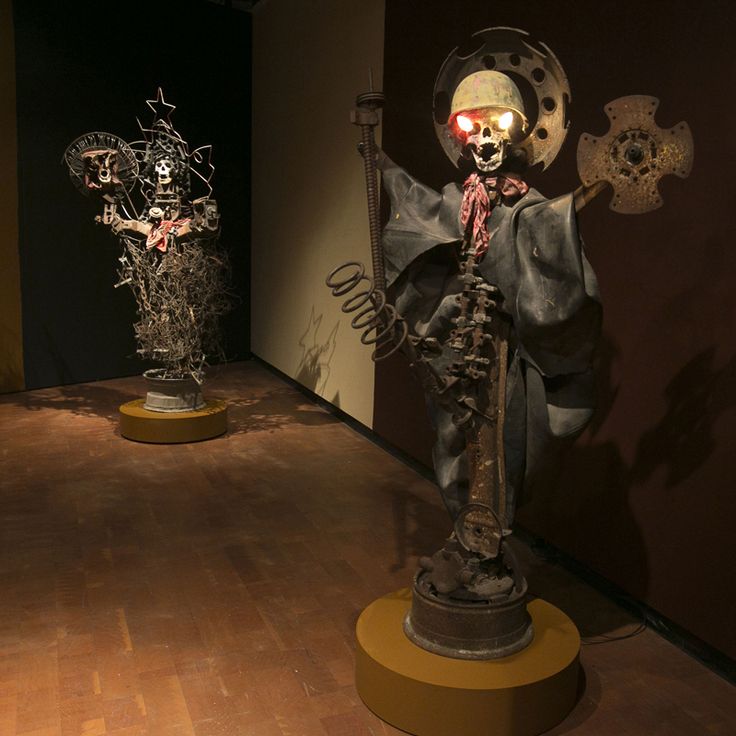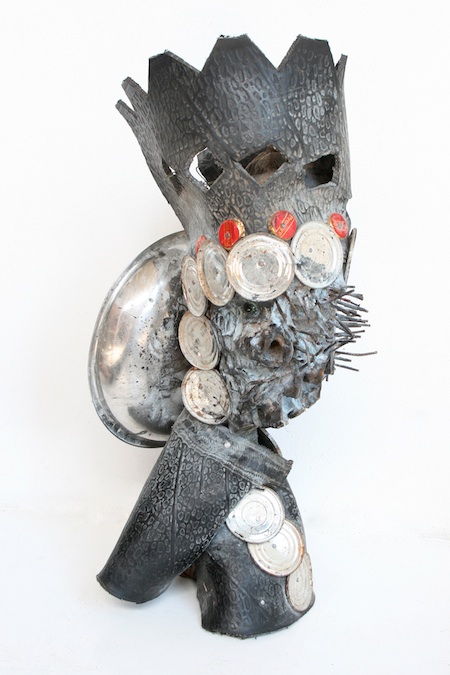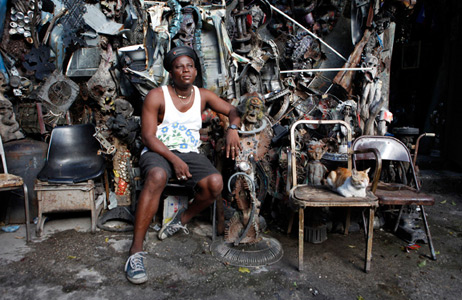
André Eugène, Haiti
Military Glory.
Some quotes out of:
A Conversation with André Eugène by Christopher Garland (2013/2014)
Ezili Danto
Born and reared, and now based, in Port-au-Prince, André Eugène is one of Haiti’s most provocative and innovative contemporary artists. His work is built from the kind of materials that one—especially in the global North—might describe as trash or scrap pieces, but in Eugene’s hands become a means for transformative art: addressing the complexity of Vodou; Haiti’s economic and social crises; sexuality; and mortality. But Eugène’s use of “found materials” is more than just access and availability for his sculptures; he and his fellow Atis rezistans, an art collective led by Eugène and formed on Port-au-Prince’s bustling Grand Rue, are what Donald J. Consentino calls the “most emblematic artists to emerge in the period between the collapse of Aristide’s government in 2004 and the earthquake of 2010.”
Untitled.
Christopher Garland:
What attracted you to the medium of sculpture? And what does it allow you to express in regard to what you have referenced as major themes: politics, death (for example, the earthquake), and the experience of the Haitian people?
André Eugène:
I was trained as a sculptor. This neighborhood—Grand Rue—traditionally produces woodcarving. Many years ago, these [pieces] were for the tourist trade, but now more of [the] works get shipped to the Dominican Republic rather than the Iron Market (in downtown Port-au-Prince). So, it is easy to learn the skills of woodcarving in this area. My sculpture allows me to express my life and my culture and my economic reality.
Installation View exhibition Vodou Sculpture.
CG:
One of the most immediate and striking aspects of your work is your use of found material (metals, wood pieces, plastics). First, alongside the accessibility of these materials, what do these materials allow you to do and express with your sculptures? Second, what are the limitations of “recycled art”?
AE:
Sometimes I find some materials and they immediately tell me what they will express. The form of the recycled materials speaks to me and sparks my imagination, leading me to what I will represent: as in the Bin Laden sculpture, which came to me once I saw the muffler. I find there are no limits . . .
Portrait of the King after the Earthquake, 2010.
CG:
You have cited the influence of Vodou in your work. Could you explain how you’ve incorporated Vodou iconography/symbolism into your work, and the importance of this to you as an artist?
AE:
I use the penis for Gede, the cross for the Baron Samedi, the snake for Danballah, and the woman with child is Dantor. It is all important as we live in a country of Vodou.





